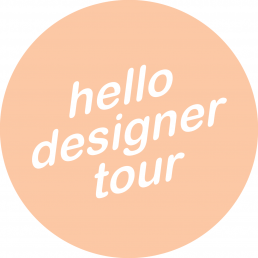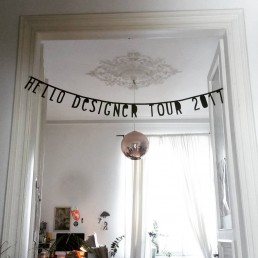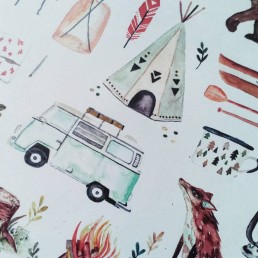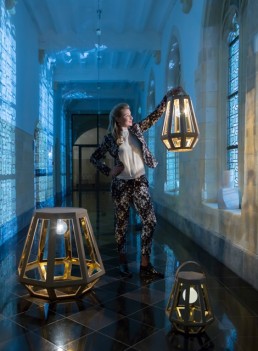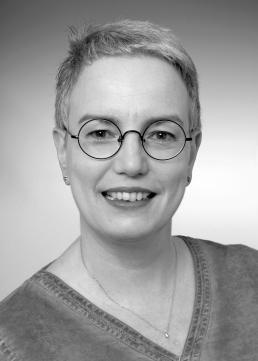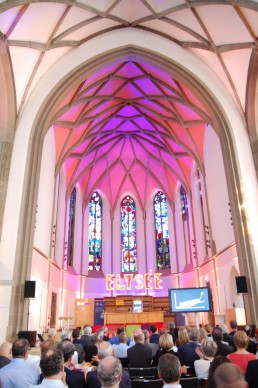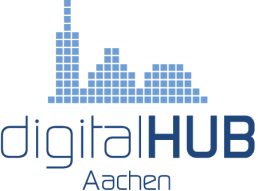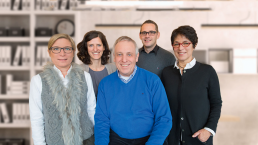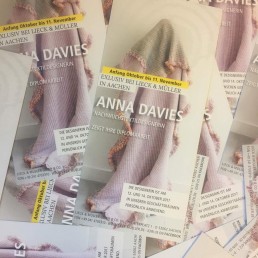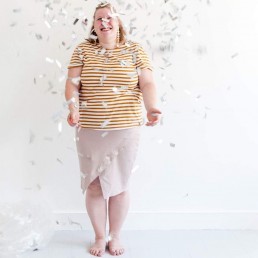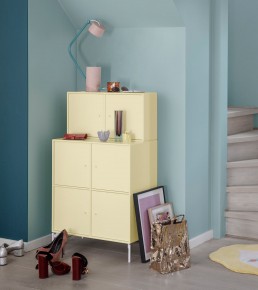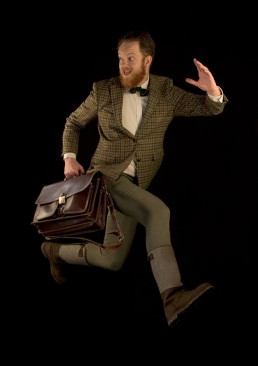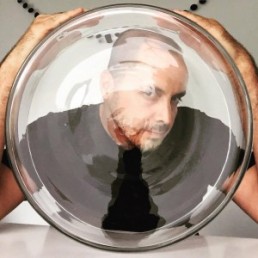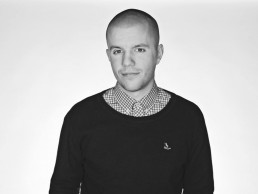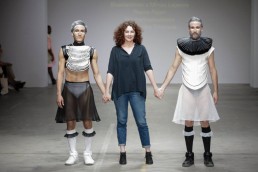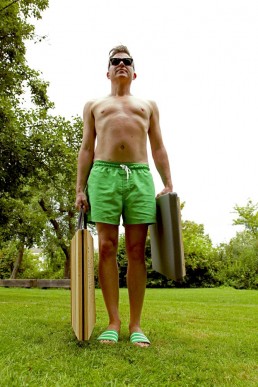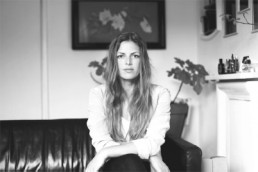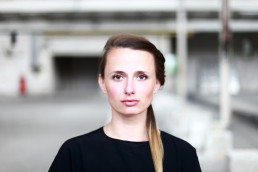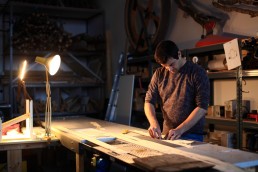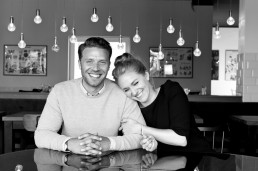Get to know... Lara Bispinck
Lara, in one napkin sketch:
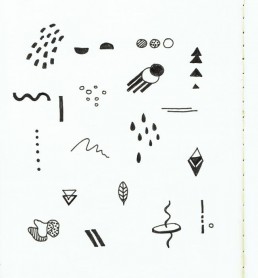
Can you tell us a little bit about yourself?
Seit 2013 arbeite ich als selbständige Designerin und Illustratorin in Aachen im Frankenberg Viertel. In meinem kleinen Atelier arbeite ich an Auftragsillustrationen, es entstehen aber auch immer neue, persönliche Illustrationen, die ich dann in meinem Online-Shop vertreibe.
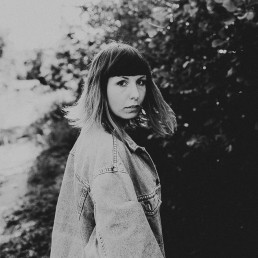
What were your first steps into the business world?
Am Anfang habe ich versucht die Fühler in alle Richtungen auszustrecken und mir so viele verschiedene Techniken wie möglich anzueignen, um mein Portfolio abwechslungsreicher zu gestalten.
What do you call your considerable skills?
Realistische Illustrationen mit Kugelschreiber und Bleistift, Aquarellillustrationen
What do you consider your distinctive achievement?
In jedes meiner Projekte stecke ich viel Leidenschaft. Eine bestimmte Leistung zu nennen ist schwierig. Wenn der Kunde und ich zufrieden sind, ist das ein gutes Gefühl.
Tell us about your epic fails:
„Kalligrafie könnte ich mal testen“, dachte ich mir eines Sonntag morgens, um nach ein paar Stunden festzustellen, dass ich das besser anderen überlassen sollte 🙂
Definitly do again:
Der Troddwar-1-Quadratmeter-Markt in Aachen hat mir sehr gut gefallen. Ein schöner Abend mit netten Leuten und interessanten Gesprächen.
Never do again:
Auf Versprechungen, wie „es folgen auch noch weitere Aufträge“, hören, wenn es um Preisverhandlungen geht.
The/Your next big thing is…
Die Illustrationen für die neue Ausgabe des Dimensionen Magazins der FH Aachen sind einer meiner Jobs, an denen ich gerade arbeite. Und wer weiß, was morgen noch hinzu kommt.
What advice would you give to young design professionals?
Nicht aufgeben! Mach das, was dich glücklich macht und irgendwann kannst du von deiner Arbeit leben.
Why does the world need design?
Design ist aus dem Alltag nicht mehr wegzudenken, ob in der Werbung oder im Supermarkt. Ohne gutes Design würde die Optik und Funktion vieler Produkte leiden.
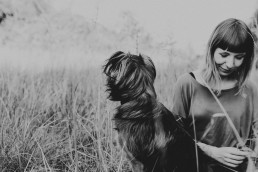
You in 5 words:
Waldmensch, verträumt, sensibel, hilfsbereit, tierlieb
Get to know... Françoise Oostwegel
Françoise, can you
tell us a bit about yourself?
My name is Françoise Oostwegel. In July 2014 I graduated at the Academy of Fine Arts and Design in Maastricht. Lamp ZUID is the start of my career as a designer and entrepreneur. In November 2014 I opened my own studio in the centre of Maastricht. The studio serves as a platform for young, new or local designers to kickstart their career and show their products.
What were your first steps into the professional world?
During the Dutch Design Week in Eindhoven three years ago a journalist from Volkskrant Magazine noticed my lamp and wanted to publish it in the magazine. There was only one condition: the lamp had to be in some sort of production. So I set up my company and started with the production of the first 50 lamps myself, all handmade. They were sold in just three months.
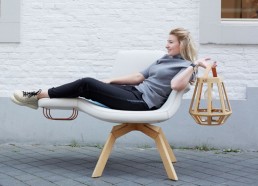
“Don’t be afraid to put yourself out there on the market.”
What do you consider your distinctive achievement?
I think my biggest achievement was opening STUDIO ÇEDILLE DESIGN. Not only is it a great selling point for my products but I can also help a lot of new designers by selling their products and giving them a chance to get that same breakthrough I had.
What do you consider your unique skill?
One of my skills is that I never forget to stick with my own style. I’m inspired by my surroundings and their history. I love to invigorate that inspiration in my designs. For example lamp ZUID. The design for the lamp was inspired by the old lamps miners used. I took that design and modernised it.
What are you looking forward to?
I’m really looking forward to taking my upcoming products on the market and finding surprising and new designers to feature in my store.
What advice would you give to young design professionals?
Don’t be afraid to put yourself out there on the market. Show yourself, be confident of who you are and your products and start creating.
Get to know… Iris Wilhelmi
Get to know
– Iris Wilhelmi
What is digitalHUB aachen?
The digitalHUB Aachen Association is committed to digitalising the economy and the public sector of the Aachen region. Members are small and medium-sized enterprises (SMEs), multinational companies, start-ups and institutions, which support the goals of our association. In digitalHUB Aachen, start-ups and SMEs (digital “enabler”) develop new digital business models as users (digital “users”) together with classical medium-sized businesses and industry. This is supported by the region and science (“supporter”). In this way, an “Aachen Area” is created as a digital innovation territory.
Our performance portfolio is based on three pillars: workspace, matchmaking as well as consulting and training. We have aligned our specific service offerings to the digital users and enablers based on their different maturity levels, thus pursuing the goal of realizing more collaborations, joint ventures, digital foundations and digital business models in the Aachen Area.
How did you become the managing director of digitalHUB aachen?
Digitalisation changes the gameplay of our everyday activities. It leads to enormous changes in economy and society,as well as work, consumption, cooperation and communication. And even more important compared to all previous transformations, in the context of digitalisation only the fastest will survive. The winners will be those who open up new markets early and quickly set their own standards. Digitalisation not only means optimizing processes and increasing efficiency through industry 4.0, but also the development of data-driven services and business models. As an expert for technology-oriented startups at the Chamber of Industry and Commerce Aachen, it was very clear to me that we had to act quickly. With our regional potential we have the power to put the Aachen area on the digital map. As the deputy managing director of the GründerRegion Aachen, I have been involved in the development of the digitalHUB Aachen right from the start. Therefore I was very proud when the board of the digitalHUB Aachen e.V. consisting of Dr. Oliver Grün, President of BITMi e.V and CEO of GRÜN Software AG, Prof. Malte Brettel, Vice President of RWTH Aachen and Michael F. Bayer, CEO, IHK Aachen, had appointed me to the management at the founding meeting on 25th July 2016.
What makes the digitalHUB aachen unique?
The digital HUB Aachen is a strong coalition of business, science and politics and thus realizes a unique bottom-up digitalisation movement in the Aachen Area with currently over 160 members. The Aachen Area offers a university region with a global prestige and many clever minds, a broadly based mid-sized sector, many world market leaders who understand their customers, a strong IT sector with 75% more IT jobs than the average of North Rhine-Westphalia, a technology-oriented startup scene and a border triangle with international contacts to countries that motivate companies to settle.
Are you connected to the design scene of the Euregio?
As a founding expert, I have always been in contact with various designers of the Designmetropole Aachen in recent years and had the pleasure to accompany some of them during their business development. Within the digitalHUB Aachen ecosystem, we are proud to count on the Designmetropole Aachen as a supporter member of the digitalHUB Aachen.
What is the purpose of design?
Design is more than the purely external shape and color design of an object. It also determines the function of an object and the interaction with the user. Through the design process, among others, the influence on the function, usability and service life of a product or software is particularly relevant. This also applies to digitalproducts. The success of a software, an app or a platform depends at least as much on its well-designed usability as in the case of industrially manufactured products.
Your favourite spots in the Euregio?
Sure, the DIGITAL CHURCH, what else? ? No, seriously, it is a wonderful inspiring place.
What is your motivation to participate in hello designer tour?
I see great promise in the cooperation with the Designmetropole Aachen. Design thinking is based on the assumption that problems are better solved if people from different disciplines in a creativity-promoting environment work together to jointly develop a question. In this process they consider the needs and motivations of people and then develop concepts. From my point of view, the work with designer is an important success factor for the concept of the digitalHUB Aachen. For this reason, together with the Designmetropole Aachen, we developed the “Design Speed Thinking” workshop, which we will be holding for the first time at the DIGITAL CHURCH as part of the hello designer tour on October 10th.
Can you tell us a little bit about ... Lieck & Müller
What is Lieck & Müller?
– Interview with Günter Corsten
This year Lieck & Müller has its 35th anniversary, and we have always been an owner-run company. Back then I bought the brand name and I’ve run it ever since.
Essentially we started off as a team of interior decorators, and soon Mrs. Blank, an interior architect, joined the team. We have always put our focus on good handcraft and individual solutions for the people coming into our store. Back when we started our focus was on textiles and it it still is today. Individual manufacturing and advice. For us the customer is the center of advice, not just here in our store, but mostly on site. There has hardly ever been a sale where we haven’t visited the customer in his or her apartment. We feel that it’s very important to match our ideas and the ideas of the customer with what’s already there, sofas, dinner table, accessories, textiles and the like. Most of it happens on site, so we’re on the road a lot.
What motivated you to participate in hello designer tour?
We have our 35th anniversary this october, and the hello designer tour came in at the perfect time. Textiles are our main focus, so it’s a good opportunity to give a young talented textiles designer a chance to present her work.
So you work quite closely with your customers?
Our store is our showroom. The customer walks in and we talk about his or her wishes and concerns and we do a preselection together. Sometimes when we visit the customer at home, I walk in and look around and nothing fits and i say “no”: we just start all over again and I do a new pre-selection.
It is not always the case, but once in a while a customer walks out with something completely different than he originally had in mind.
How did you happen to become the owner of Lieck & Müller?
Back then I worked in my parents’ company. In 1972 I finished learning the upholstery trade, and since then I have been standing on my own feet. My parents basically ran a textiles and leather upholstery shop in Horbach, a village 8 km from Aachen. And so it happened that on a trade fair in 1982 I heard rumors of Lieck & Müller going bankrupt. And I thought may-be this could become a new and wider base for our business, and in a bigger city. I contacted them, bought the company, took over on the fly with the jobs they still had open with their customers.
Has a lot changed since then?
In 1989 it became obvious that our store was becoming to small, and eventually we found a new place on Aachens Theatre Square. We had not really planned renovating it from top to floor but when took a deep look as a crafts-man I started finding small things here and there that needed to be done, and the deeper we looked the more we found. It evolved into quite a big contruction site. We worked with the architect Horst Fischer, and we got these nice high ceilings and the front front, and when you look at it today, you wouldn’t guess that everything’s almost 30 years old. Even the textiles racks are from 1989.
What makes Lieck & Müller unique?
It’s really serving our customers with a wide variety of individual solutions, lounge furniture, accessories, decoration, wardrobes, you name it. And sometimes we even ignore the producers’ specifications: If a cabinet has to be 105cm wide, but the catalogue allows only 90 or 100 cm, we make it happen anyways. And if we need the help of a locksmith, we do it, no matter if it’s a kitchen, a bathroom or a living room, we can solve most problems. Sometimes, trying to find the optimum solution for a customer keeps me busy even over the weekends.
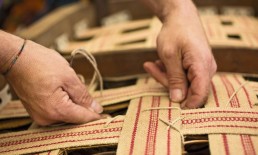
After 35 years in the business what’s your alltime favorite story?
Imagine walking into a room and the customer asking you “What can we do with this corner over here? Do you have an idea by any chance?”. And then you actually do have an idea, but there is no way to show the piece of furniture you have in mind because it’s not in production any longer. We went to hell and back to find and old photograph of the piece, actually it was a display cabinet. It had to be this exact piece. And it took almost a year for the cabinet to finally be delivered to the customer. This was three years ago, and just recently the customer told us how happy she still is.
Are you connected to the design scene in the Euregio?
Of course Gut Rosenberg school for handcraft design in Horbach. It’s my home town and I knew the buildings when they were still a farmhouse. Once in a while their students come to us for help with their upholstery problems. And of course we always visit the exhibitions at Gut Rosenberg. Plus we watch closely what’s happening in Kortrijk every other year.
It’s our first time in hello designer tour and also our first time that we showcase a young designer in our store. We think it’s tough to market a designer’s products directly. It’s easier to give a few hints and connect a designer with a producer we know. And a young designer doesn’t want to get stuck in single piece production, and I think as a small vendor we cannot deliver the numbers a designer needs to really take off.
What is the purpose of design for you?
For me it embodies the challenge to start from a stimulus or an idea for a concept and then combine creativity with functionality and aesthetics in order to trigger emotions in an observer or user. Good design can make you feel happy, amazed, make you think or even make your life easier with the help of a high level of funtionality. Just look at Eileen Gray’s Adjustable Table: A simple form and a table with an adjustable height. But all the things you can do with it! Work with your computer on it, eat or use it as a side table next to your couch. Back then laptop computers didn’t even exist. This piece is just brilliant, unfortunately we don’t sell it, but it’s one of my all-time favorites. Just like the Wagenfeld lamp you can combine it with any interior.
What are your favorite places in the Euregio?
The Aachen Cathedral or “Aachener Dom” in German. It’s just a great structure, and every time I visit it I am spellbound by its magnificence. A place to sit down and relax. Maastricht is also very pretty, unfortunately Aachen does not have the same flair. And I love my workshop, to the horrors of my partner (laughs).
Is the Euregio a significant location factor for you?
The city of Aachen has been struggling for a long time to make Aachen what it could really be: a truly euregional city, especially for the retail industry. We have very few customers from the Netherlands, well, a few more in Belgium, and actually we have more customers in Brussels than in the Euregio. I don’t know why, but is there still is a border.
Do you have ideas how to improve this?
The mayors of the cities probably collaborate on many projects but we hear less and less. There should be put more effort into connecting people, definitely.
A cup of entrepreneurship with… Marco Iannicelli
Can you tell us a little about yourself?
I am 31 year old, I studied at the academy formerly known as, Academy of Fine Arts and Design Maastricht (ABKM) graduating as a product designer.
September 1, 2017
